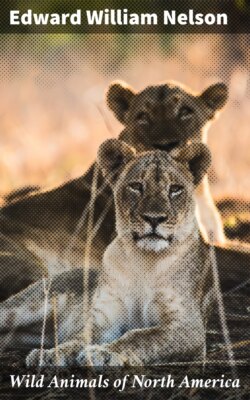Читать книгу Wild Animals of North America - Edward William Nelson - Страница 14
На сайте Литреса книга снята с продажи.
FEWER LARGE MAMMALS IN THE TROPICS
ОглавлениеTable of Contents
It is notable that the fossil beds which prove the existence of an extraordinary abundance of large mammals in North America at various periods in the past, as well as the enormous aggregation of mammalian life which occupied this continent, both on land and at sea, at the time of its discovery, were confined to the Temperate and Arctic Zones. It is popularly believed that the tropics possess an exuberance of life beyond that of other climes, yet in no tropic lands or seas, except in parts of Africa and southern Asia, has there been developed such an abundance of large mammal life as these northern latitudes have repeatedly known.
From Scott’s “History of the Land Mammals of the Western Hemisphere”: Macmillan Company
THIS REPRESENTS A SCENE AT THE CALIFORNIA ASPHALT PITS, WITH A MIRED ELEPHANT, TWO GIANT WOLVES, AND A SABER-TOOTHED TIGER (SEE PAGE 399).
In temperate and arctic lands such numbers of large mammals could exist only where the vegetation not only sufficed for summer needs, but retained its nourishing qualities through the winter. In the sea the vast numbers of seals, sea-lions, walruses, and whales of many kinds could be maintained only by a limitless profusion of fishes and other marine life.
From the earliest appearance of mammals on the globe to comparatively recent times one mammalian fauna has succeeded another in the regular sequence of evolution, man appearing late on the scene and being subject to the same natural influences as his mammalian kindred. During the last few centuries, however, through the development of agriculture, the invention of new methods of transportation, and of modern firearms, so-called civilized man has spread over and now dominates most parts of the earth.
As a result, aboriginal man and the large mammals of continental areas have been, or are being, swept away and replaced by civilized man and his domestic animals. Orderly evolution of the marvelously varied mammal life in a state of nature is thus being brought to an abrupt end. Henceforth fossil beds containing deposits of mammals caught in sink-holes, and formed by river and other floods in subarctic, temperate, and tropical parts of the earth, will contain more and more exclusively the bones of man and his domesticated horses, cattle, and sheep.
